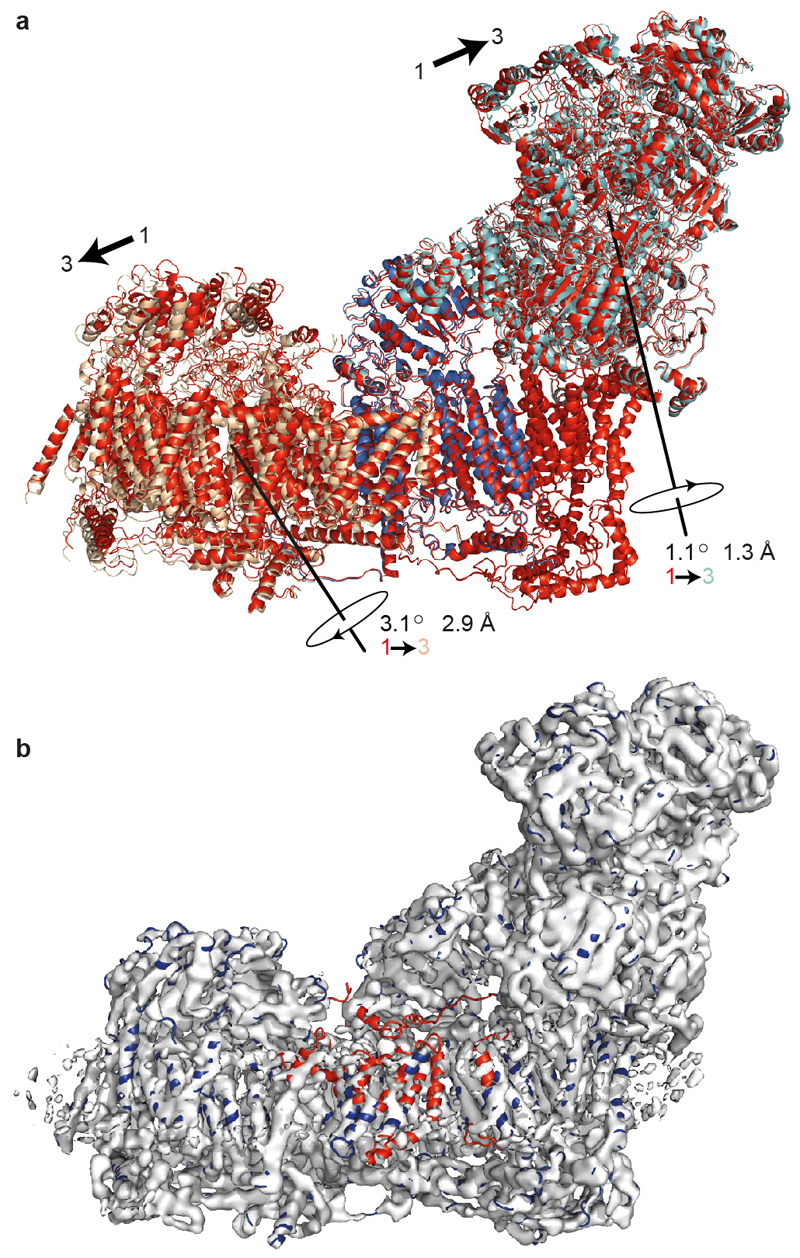ED Figure 5. Relationships between classes 1 and 3.
a) The structures for classes 1 and 3 have been superimposed using ND1 and ND3. In class 3, relative to class 1, the hydrophilic and distal membrane domains are both rotated and shifted, but the change in the membrane domain dominates. Although the changes appear to make the angle of the L-shaped molecule increase they do not originate from a hinge-like motion at the interface of the hydrophilic and membrane domains. Class 1 is in red, class 3 is in red (ND1 domain), wheat, blue and cyan. Details of the composition and movement of the domains are given in ED Table 4. b) The density for class 3 (white) is presented with the model for well-resolved regions of class 3 in blue (the model is enclosed in the density) and the model for poorly resolved regions in red (the model appears outside the density). The poorly resolved regions include the N-terminus of 49 kDa and the transverse helix in ND5, as well as elements of ND4, ND6, B14.7, ESSS and B15.

